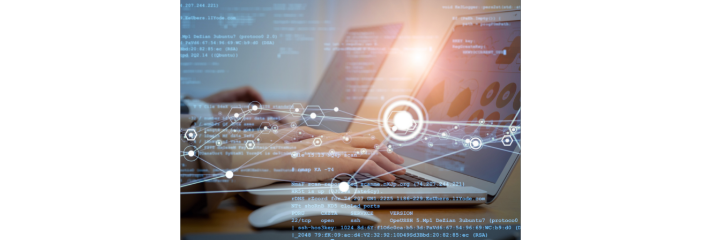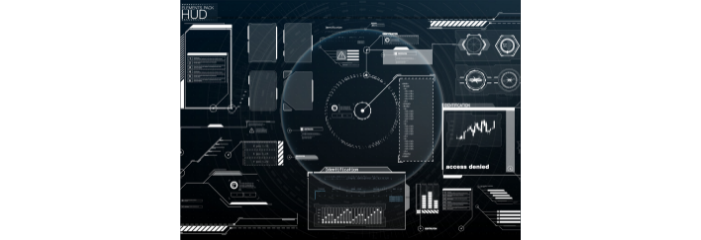
Here's a recurring management theme, even though the concept dealt with at the first level is basically only linked to the input and output of materials.
.png)
Supply issues, scarcity of resources, and rising interest rates, companies are currently facing an economic period with their share of uncertainties and challenges. Several are thus tested at different levels: expensive financing, more complex management of resources, stability or decrease in income, etc.
.png)
Good resources are rare, which is why it is crucial to do everything you can to keep your best employees and stay as attractive as possible in the job market. As a manager, it is up to you to skillfully combine development with stability.

Management is a sober concept that withstands all your attempts at escape. If you were able to focus on your business and your clients, everything would be better, you say.

Like any organization that processes a large flow of information and money every day, unfortunately, not every business is immune to fraud. How to best protect ourselves against this crime?

For a manager, the process of analyzing and selecting management software is no simple task. This is even more true if you are not already computerized. It is hard to choose between the simplicity of use of software and its flexibility, i.e., its ability to adapt to different, constantly changing needs. Unfortunately, the second criterion is often rejected much too quickly.

The current global pandemic is disrupting our social, economic, and personal environment. I am proposing to you today a reflection that aims to support your managerial approach in this imposed step back.
First, the diversity of economic activities and the intrinsic nature of each industry results in variations in the goals that each company can set for itself during this turbulent period.
Far be it from me to think the vision I share with you is a panacea for everyone's challenges.
.png)
CTRL management solutions enable and drive the application of three key Lean management principles through some unique features of CTRL’s application platform: CTRL/Smigg, our modular and integrated global management system.
- Muda: the elimination of anything worthless, be either time or material
- Muri: optimizing and simplifying the company’s processes to reduce or even eliminate overwork and overload
- Mura: the variability, or irregularity of the application of processes by material or human resources to increase the quality and volume of goods or services produced
More than just a technology platform, CTRL/Smigg is a business operational platform that offers tremendous flexibility to adapt to the entrepreneur’s vision and key processes.

In recent years, all sectors have been shaken up by the forced revision of their business model with the advent of the web and mobile technologies.
With new possibilities for the project manager and the site manager to increase their management efficiency and the quality of their deliverables, the construction industry is no exception.

The volume of documents and communications in the construction industry is no secret.
In fact, few are those who minimize the administrative burden that directly impacts their projects' profitability.
Today's computer science offers us these quick and instant recipes, which are, on the surface, quite simple to implement.
Ultimately, the principle boils down to managing project documents and the exchange of information between project stakeholders. No?
Have you ever had the impression that you were being told anything when faced with a simple prerogative in the progress of a project? That you were being served illogical comments about your structured approach? Comments that were not fundamentally focused on constructive dynamics and advancement of the project? If so, rest assured, you are not the only manager in this situation.

The web and mobility multiply the operational dimensions of an ERP computerization project. Classical methodologies for deploying systems that were already producing mixed success are now facing an augmented reality, a Rubik's cube of 10 by 10 in terms of the variables to be managed.
This multiplication of variables can more than ever lead a company to significant issues if the computerization project's management is not adapted to the new operational paradigms introduced by web and mobile technologies.

The "human-machine" interface, the device that allows you to interact with your favorite equipment, such as your smartphone, is the crucial component that determines the efficiency and satisfaction you can derive from it.
.png)
During the past few years, I have had the opportunity to be invited to present the operational concepts behind CRMs (Customer Relationship Management), a conference during which I was asked to introduce the less familiar concept of XRMs (Extended Relationship Management).
It is very much intrigued that I had to answer basic questions relating to the operationalization of the tool instead of questions that focused, for example, on a vision, such as “What more could I do in the future with a CRM, what would be my next step?”.

Taking a moment to surf a period of accelerated growth, I realize how much time has passed since my previous post.
The first question that comes to my mind is, "what did I do during this period that kept me so busy that I didn't take an hour to share my passion?"
.png)
CRM (Customer Relationship Management) tools and solutions and, more recently, XRM (Extended Relationship Management) constitute essential levers in customer relationship management.
We seek to optimize contact and communication with our client or a strategic third party for our organization through these tools. The central objective: maximize the positive experience of the customer or the third party in his dealings with our team.

The advent of the Internet has revolutionized the way we view and promote the goods we sell. Today, you are undoubtedly more visible than you’ve ever been before and make a point of constantly investing in optimizing your online position. Sales are what counts, and your Internet portal is a strategic tool.

Managing change is crucial to the success of any technological project. Given that businesses are constantly evolving by adapting to new corporate visions and strategies, the need to become efficient agents of change and specialists in swift adaptation is critical.

The complexity of our business environment is constantly increasing, making strategic, tactical, and operational navigation increasingly difficult and subtle. In my opinion, complexity can even lead to inaction and bring a business to a standstill.

Open Source is a technological reality that continues to gain in popularity. It is interesting to note, on the other hand, that the concept was present from the early 1960s.

That is the question: should you favour a management approach based on the flexibility of adapting to a series of different business situations, or should you choose an approach centred on optimizing stable and predefined strategic processes?

What if I told you that I found the recipe, the exact methodology to drive your business to success by titillating you with some simple yet powerful principles?

An article in “Direction informatique” magazine entitled “Implanter les TI avec succès: tenir compte du facteur humain” (Implement It Successfully: Take the Human Factor Into Account) exposed the human challenges that come with an IT project.

Obviously, it is a hot topic that firstly imposes a proposal for a definition. I will adopt the definition of "Social Network" as proposed by Wikipedia. It strikes me as fair and well documented.

Referring to the article titled “Legal IT 3.0” produced last April by Alain Beaulieu of the Direction Informatique magazine, I find it reassuring that we are bringing to the fore the notion of “sound management practices” as a start of an effective solution for the exploitation of organizational information.
.png)
Through my years of experience, I have noticed that company managers who come up against business problems often confuse a management tool with a solution.
While not negating the role a technological tool plays in solving a management problem, there is a need to acknowledge certain basic principles to avoid exacerbating a problem rather than solving it.
